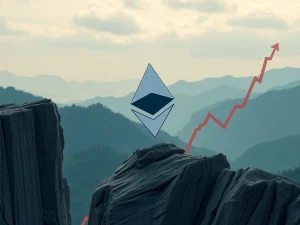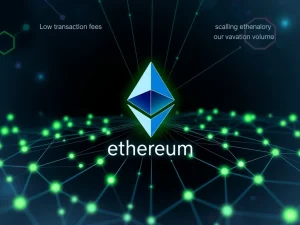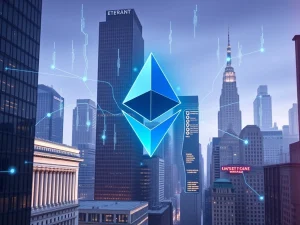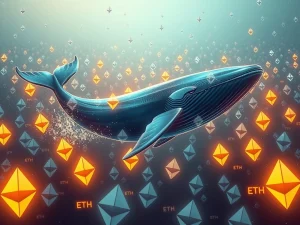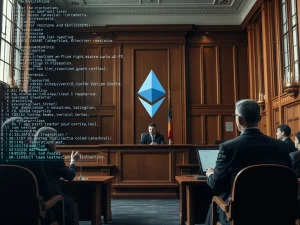Unlocking Ethereum’s Future: Vitalik Buterin’s Bold Vision for Low-Risk DeFi Revenue
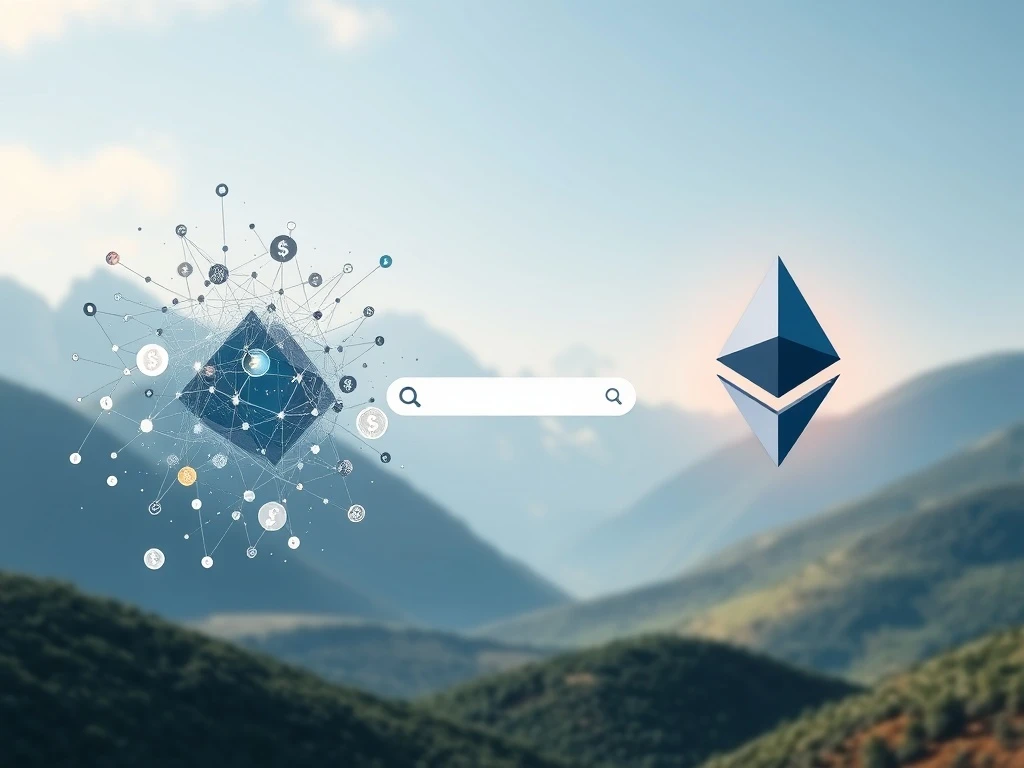
The cryptocurrency world constantly seeks pathways to sustainable growth and widespread adoption. Recently, a significant idea emerged from Ethereum co-founder Vitalik Buterin. He suggests that **Ethereum DeFi**, specifically low-risk protocols, could secure the network’s financial future. This vision draws a compelling parallel to how Google Search underpins Google’s vast ecosystem. It proposes a harmonious balance between economic stability and Ethereum’s core decentralized values.
Vitalik Buterin’s Vision for Economic Stability
Vitalik Buterin, a leading voice in the blockchain space, recently articulated a pivotal strategy for Ethereum’s long-term economic health. He highlighted a persistent tension within the Ethereum community. On one side, applications like NFTs, memecoins, and speculative trading generate substantial revenue. On the other, non-financial or semi-financial apps embody Ethereum’s foundational cultural and ethical values. However, these value-driven applications often struggle with adoption or fail to generate sufficient fees. This creates a disconnect. Buterin believes **low-risk DeFi** can bridge this gap. It can provide a stable, ethical revenue stream without compromising the network’s core principles. This approach ensures financial success aligns with community values.
For example, Buterin pointed to stablecoin lending on DeFi platforms such as Aave. These protocols offer deposit rates around 5% for established assets like Tether (USDT) and USDC. Higher-risk stablecoins can even yield over 10%. Such consistent returns demonstrate the potential for reliable **DeFi revenue**. This contrasts sharply with the volatile, often speculative nature of other crypto sectors. The stability offered by these protocols presents a robust model for economic sustenance.
The Google Analogy: Search as a Revenue Engine
Buterin’s analogy to Google is particularly insightful. Google, a tech giant, engages in numerous innovative ventures. These include its Chromium browsers, Pixel phones, and open-source AI models like Gemini. Yet, their primary revenue source remains Google Search and its associated advertising. These other products, while valuable, generate only a fraction of Google’s total income. Similarly, Ethereum could benefit from a foundational revenue generator. This would allow other, perhaps less financially lucrative but culturally significant, applications to thrive. The comparison underscores the importance of a stable economic backbone.
This strategy allows Ethereum to pursue diverse **blockchain innovation**. It enables development in areas that may not immediately generate high fees but contribute significantly to the ecosystem’s overall utility and ethos. By securing a reliable revenue stream through low-risk DeFi, Ethereum can support a broader spectrum of applications. This includes public goods, identity solutions, and other non-financial utilities that strengthen its decentralized fabric. Consequently, the network becomes more resilient and versatile.
Ethereum’s Decentralized Advantage Over Centralized Models
Buterin emphasized that Ethereum has the potential to outperform Google. Its decentralized structure inherently aligns financial success with ethical outcomes. Unlike Google, which he criticized for its advertising-driven model that often leads to user data hoarding, Ethereum’s design fosters transparency and user control. Google’s revenue incentives can conflict with its original open-source ethos. Conversely, Ethereum’s decentralized **DeFi revenue** model avoids such conflicts. It encourages a system where economic growth benefits the entire community, not just a central entity.
The key insight here is that the revenue generator does not need to be the most revolutionary application. It must, however, be ethically sound and not ’embarrassing’ for the community. This ensures that while the network generates income, it upholds the values that attracted users in the first place. This principle is crucial for maintaining trust and fostering long-term adoption. Therefore, **low-risk DeFi** aligns perfectly with this requirement, offering both stability and integrity.
Current DeFi Landscape and Future Adoption
The total value locked (TVL) on Ethereum DeFi recently surpassed $100 billion. This marks its highest point since early 2022. This resurgence follows a significant downturn during the 2022-2023 bear market. TVL figures have largely mirrored the performance of top layer 1 tokens during the current bull market. This renewed growth signals increasing confidence in the DeFi sector. Furthermore, regulatory momentum, particularly with proposed legislation like the Digital Asset Market Clarity Act, is expected to drive **Ethereum DeFi** adoption even further.
A recent survey from the DeFi Education Fund revealed compelling statistics. Over 40% of Americans expressed openness to using DeFi protocols if stronger regulatory frameworks were established. This highlights a significant demand for clarity and security. As a result, a well-regulated, low-risk DeFi environment could unlock a massive wave of new users. This potential for mainstream acceptance underscores the importance of Buterin’s vision. It paves the way for a more accessible and trusted financial ecosystem.
Beyond Stablecoins: Exploring New Forms of Blockchain Innovation
While low-risk DeFi often focuses on providing easier access to the US dollar, especially in high-inflation economies, Buterin advocates for broader **blockchain innovation**. He envisions other crypto-assets that could bolster Ethereum’s economic foundation. Specifically, he pitched the idea of building cryptoassets that track a basket of global currencies. This diversification could offer enhanced stability. Additionally, he suggested the development of ‘flatcoins,’ which are cryptoassets directly pegged to consumer price indices (CPI). These flatcoins would offer a hedge against inflation, providing a more stable store of value than traditional fiat currencies. Such innovations would expand the utility and resilience of the Ethereum ecosystem.
These forward-thinking concepts demonstrate Buterin’s commitment to creating a robust and adaptable financial infrastructure on Ethereum. By exploring diverse forms of stable assets, the network can cater to a wider range of economic needs. This strategic foresight ensures that Ethereum remains at the forefront of financial evolution. It continues to push the boundaries of what is possible within a decentralized framework. Ultimately, these advancements reinforce the long-term viability and growth potential of **Ethereum DeFi**.
Conclusion: A Sustainable Future for Ethereum
Vitalik Buterin’s compelling argument for low-risk DeFi presents a clear path to a sustainable and ethically sound future for Ethereum. By establishing a stable **DeFi revenue** stream, similar to Google Search’s role, Ethereum can support its diverse ecosystem. This includes both financially lucrative and culturally valuable applications. The network’s decentralized nature gives it a distinct advantage. It allows for economic success that aligns with its core values, avoiding the pitfalls of centralized models. As the DeFi landscape continues to mature, with increasing TVL and regulatory clarity, Buterin’s vision for **low-risk DeFi** offers a blueprint for unparalleled **blockchain innovation** and widespread adoption. This strategy promises not only to stabilize Ethereum but also to empower a new era of ethical financial technology.

